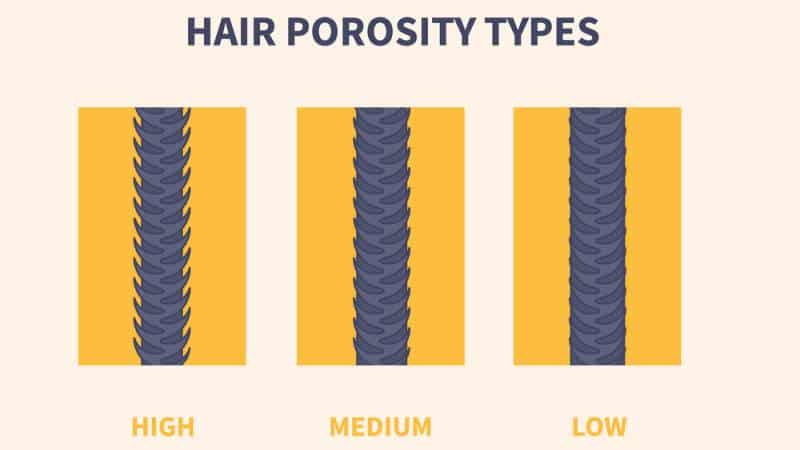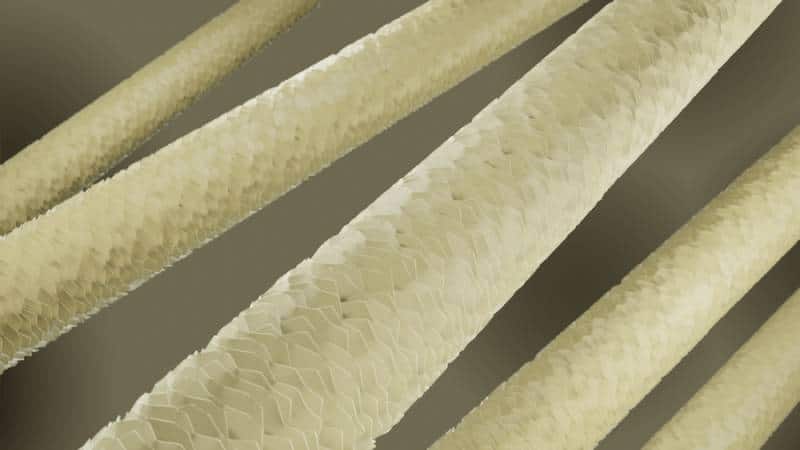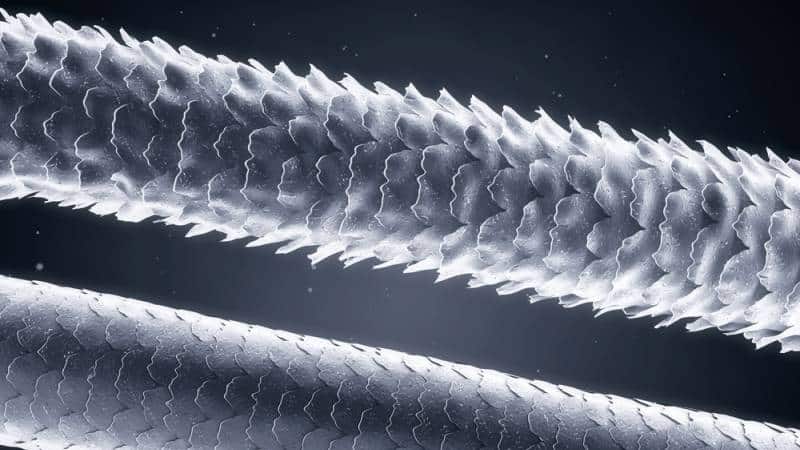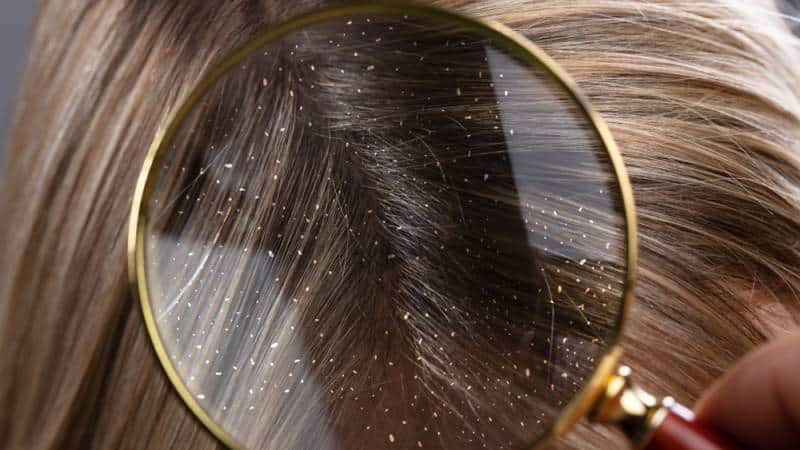If you are one of the many people with low porosity hair, then you know that taking care of it can be a challenge. The good news is that there are ways to help keep your hair healthy and looking its best.
In this article, we will discuss some of the best ways to take care of your low porosity hair. We’ll also provide you with some background information on low porosity hair and the science behind it.
So, let’s get started!

What is Low Porosity Hair?
Most people are familiar with the different hair porosities – low, medium, and high. If you have low porosity hair, that means your hair doesn’t let moisture in easily. This makes it difficult to condition and style your hair.
In fact, some naturalistas refer to their low porosity as “training wheels,” because they must work a little harder to care for it than they would high porosity hair, which absorbs moisture more easily.
How Do I Know if I Have Low Porosity Hair?
There are a few signs that can help you determine whether or not you have low porosity hair:
- Your hair is often tough and wiry. This can make it difficult to manage, particularly when styling or applying heat.
- Your hair is often very shiny and reflective – almost like plastic.
- If you have low porosity hair, you will likely notice that your hair takes a long time to dry after washing.
The Pros and Cons of Low Porosity Hair
There are some advantages and disadvantages to having low porosity hair:
The Pros of Low Porosity Hair
There are several pros to having low porosity hair. First, because your hair doesn’t absorb moisture easily, it often looks very healthy and shiny. Second, low porosity hair is less likely to be affected by humidity, which can be a plus during the summer months. Finally, low porosity hair is less prone to frizzing and tangling, which can be a hassle.
The Cons of Low Porosity Hair
Unfortunately, there are also some cons to having low porosity hair. First, because your hair doesn’t absorb moisture well, it can be difficult to condition and style it. Second, if you don’t take care of your low porosity hair properly, it can become dry and brittle. Finally, if you live in a humid climate, your low porosity hair may become weighed down by the moisture in the air.

How to Care for Low Porosity Hair
If you have low porosity hair, then it’s important that you take the necessary steps to care for your locks. Here are some tips on how to do just that:
- Deep-condition regularly: Because your hair doesn’t absorb moisture well, it’s especially important to deep-condition regularly. Be sure to use a deep-conditioning treatment that contains protein, such as hydrolyzed keratin or silk amino acids – these treatments will help strengthen your hair and reduce any shrinkage.
- Always rinse in cold water: Rinsing your hair with cold water is one of the best ways to seal in moisture. This helps your hair absorb conditioner more effectively, preventing it from becoming dry and brittle.
- Try out a pre-poo treatment: A pre-poo is a great deep-conditioning treatment that you can do before washing your hair. In fact, some people believe that a pre-poo is one of the best ways to care for low porosity hair. If you don’t know what a pre-poo is, it’s simply an oil treatment that helps boost your scalp’s health and hydration before shampooing your hair.
- Use heat-styling sparingly: Because of its natural toughness, low porosity hair can often be difficult to style. To combat this, avoid using any heat-styling tools (such as a flat iron or curling wand) and instead opt for air-drying or the “plopping” technique (which is just wrapping your damp hair in a t-shirt).
- Skip the gels and hairsprays: Hairspray, gel, and heavy pomades can easily weigh down your hair, making it frizzy. Instead, opt for lighter products that won’t leave a residue behind–these will help your low porosity hair stay healthy and bouncy.
What to Avoid With Low Porosity Hair
While it’s important to take good care of your low porosity hair, it’s also crucial that you avoid certain practices. In fact, there are a few things you should never do if you have low porosity hair. Here are a few examples:
- Avoid wearing ponytails or buns: Ponytails and buns are often a great go-to style for people with low porosity hair, but they come with a big risk–they can easily cause breakage if worn too frequently or tightly.
- Avoid washing your hair daily: Washing your hair every day can actually strip away the natural oils that help keep it moisturized. If you do need to wash your hair daily, be sure to use a gentle cleansing conditioner (instead of shampoo) in order to prevent your scalp from drying out.
- Avoid applying too much product: Applying too many products can cause buildup on your hair, making it look greasy and weighed down–both of which will make styling your locks a lot harder.
- Avoid chlorine-containing products: If you use pool water or other forms of chlorine on your hair, it can cause damage and dryness. Instead, try to use shampoos with UV protectors in them to keep color from fading and breakage from occurring.
- Avoid using products that contain alcohol, silicones, and detergents: These ingredients are known to strip away moisture and cause breakage. Instead of using traditional hair care products, try looking for ones that are made specifically for low porosity hair–they may be a bit more expensive, but they’ll work much better!
If you have low porosity hair, it’s important that you find the right products and techniques to keep your locks looking healthy and beautiful. By following these tips and avoiding the mistakes mentioned above, you can care for your locks in a way that makes them feel soft, smooth, and shiny.

Things to Consider Before Purchasing a Product for Low Porosity Hair
When you’re shopping for low porosity hair products, it’s important to take your unique hair type into account. Every woman has different needs, so think about the symptoms of your low porosity hair and seek out products that can help. That way, you’ll end up with a great product that will do wonders for your locks.
- Does it contain proteins? If you have low porosity hair, then your locks are likely pretty tough and wiry. Because of this, it’s important to find products that contain protein – this will help strengthen your hair and reduce any shrinkage.
- How much does it weigh down your hair? Low porosity hair can easily become weighed down by the moisture in the air, which can be a problem during the summer months. To combat this, try to find products that are lightweight and non-greasy – these will help keep your hair clean without weighing it down.
- Does it leave a residue behind? One of the major problems with low porosity hair is that it can become weighed down by the moisture in the air, which can cause frizzing and tangling. To avoid this, try to find products that don’t leave a heavy residue behind, such as oil-based or alcohol-free formulas.
- How much does it help with conditioning? Because low porosity hair is prone to becoming dry and brittle, it’s especially important to use products that contain lots of moisture. Find a conditioner that can leave your hair soft, silky, and smooth for the best results.
- Does it help with styling? If you have low porosity hair, then you’re probably familiar with the struggles of styling your locks. Fortunately, there are plenty of products that can help make these tasks easier – just be sure to look for one that offers heat protection as well.
Final Thoughts on Low Porosity Hair Care
Low porosity hair is a common type of hair that can be prone to dryness and tangling. In order to keep it looking healthy and beautiful, it’s important to avoid washing your locks every day, avoid applying too much product and make sure you’re using the right products for your unique hair type.
By following these tips, you can enjoy having smooth, silky, and shiny locks that are free of tangles and frizz. Good luck!
Do you have any other tips for caring for low porosity hair? Share them with us in the comments!


